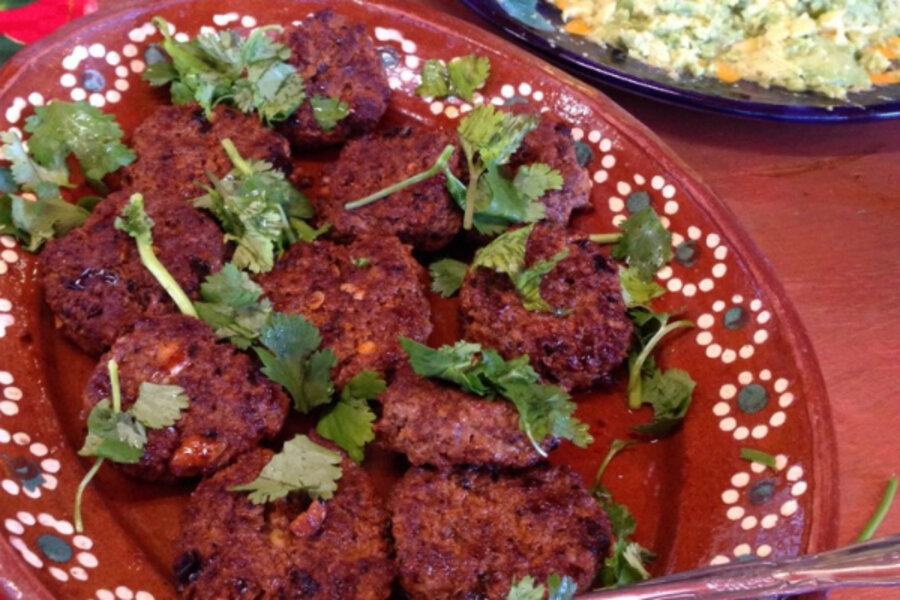Homemade chorizo (Mexican spiced sausage)
Loading...
Last December, my son and I went on a vacation to Cabo San Lucas, Mexico, with my family. Namely, my parents, my brother and his wife and two boys, and my sister and her husband. Thanks to my brother’s timeshare, 10 of us sprawled out over three hotel rooms, mixing and matching affinities and sleep schedules.
Yes, we are a very communal family. And it’s always been that way as far as I can remember.
Growing up, our trips to visit relatives in Indonesia were similar. All five of us — two parents and three kids – would squeeze into an aunt’s or cousin’s bedroom. We tried to pile as many of us onto the bed(s)—sometimes two singles, a queen if we were lucky – and the rest got relegated to mattresses on the floor.
My mom always used the term “gelaran” in Indonesian which I took to mean “spread out wherever you can.” When I actually looked up its meaning, it was “mat” or “carpet” which I suppose makes sense? We did spread out on the floor like a mat or carpet.
That’s how we rolled, and apparently, still roll. Although this time, there were enough beds to go around.
I don’t mind it, and I have no problem being in close quarters with my dear ones. But I was sure glad my husband wasn’t able to make it because of work. For him, a little of my family goes a long away.
Anyway, it was a fabulous trip!
We had plenty of sea and sun. And ate lots of great food.
But the highlight for me was a cooking class with Donna Jones who owns Casa de Colores Traditional Mexican Cooking School. I’ve never been a huge fan of Mexican cuisine. I’d have enchiladas or tacos once in awhile but I’ve never craved it. One morning with Donna made me a proud convert.
Donna’s enthusiasm was infectious as she discussed the cuisine’s history and regional differences. She discussed cooking techniques, spices, and elaborated on chiles and salsas in extreme detail.
Halfway through the class it clicked — Mexican cuisine with its use of multiple chiles and spices is very similar to Asian cooking.
- The equipment is similar. The molcajete is just like a mortar and pestle. The comal looks like a flat wok.
- The techniques are the same. Ingredients like chiles, tomatoes and spices are charred or toasted first. Then they’re blended into a spice paste (like a Thai curry or Malay rempah) traditionally with a mortar and pestle, and with a blender or food processor in modern times.
- The sauces are versatile, and can be used in myriad ways. A mole can bathe chicken or beef, or it can be used as a base for a soup or stew. Same goes for a red curry paste, it goes well with duck or in a soup for noodles.
- There’s no-waste. Leftover tortillas are turned into chilaquiles. In so many Asian cultures, leftover rice is turned into congee or fried rice.
- Mexican and Asian cooking can sometimes be laborious but both are worth the effort as they yield an absolutely delicious product.
Out of all the dishes I learned during Donna’s cooking class, the one that stuck with me the most was chorizo. I’ve eaten it and I’ve seen it at the store but I’ve never thought to make it. I changed my mind.
Many of the spices I know well – coriander, cloves, cinnamon, bay leaf. And the method I can do on autopilot – toast the spices and puree with chiles and garlic. And another tidbit: chorizo (also called longganisa) shows up in Filipino food too thanks to a shared Spanish history!
Store-bought chorizo, with its flaming red hue and robust flecks of fat, has always scared me. But when I tried Donna’s homemade version, I was hooked. We ate them as sliders with a side of fresh guacamole — a match made in gustatory heaven. Ancho chiles (Capsicum Annum) are pretty mild, ranging from 3 to 4 on a heat scale of 1 to 10. They’re essentially dried poblano peppers and have a sweet fruity flavor with hints of cherry, prune, and fig.
Armed with new knowledge and perhaps a familiarity by association, I have gained respect for traditional Mexican cooking. And I’ll be eating and cooking Mexican food a lot more often now!
Homemade chorizo (Mexican spiced sausage)
Adapted from Casa de Colores School of Traditional Mexican Cooking
4 ancho chiles, stemmed and seeded
4 cloves garlic
4 black peppercorns
2 whole cloves
1 allspice berry
1-inch cinnamon stick, crushed
1 bay leaf
1 teaspoon Mexican oregano
1/2 teaspoon whole coriander seeds
1/2 teaspoon thyme
1 teaspoon sea salt
2 to 4 tablespoons cider vinegar
1 pound 6 ounces ground pork or beef (try not to get lean meat)
1. Toast the ancho chiles in a dry skillet or griddle over moderate heat. Turn occasionally with tongs to prevent them from burning, until they begin to darken and smell pungent, about 3 to 4 minutes. Add the garlic toward the end and keep an eye on them. Don’t let them blacken or they’ll be bitter.
2. Transfer to a medium bowl. Cover with about 2 cups boiling water and soak for 20 minutes, or until softened. Drain and cut into smaller pieces and place chiles in a blender with the garlic.
3. Meanwhile, toast the peppercorns, cloves, allspice, cinnamon, bay leaf, Mexican oregano, coriander seeds and thyme in a dry skillet over medium until fragrant. Grind in a spice grinder or mortar and pestle.
4. Add the ground spices, sea salt and 2 tablespoons vinegar to the chiles in the blender. Puree into a smooth paste, adding up to 2 more tablespoons vinegar to free the blades if necessary.
5. Using gloved hands, mix the spice paste into the pork. Cover and marinate for 3 days in the refrigerator, flipping often. Stuff into sausage casings or shape into sliders or freeze as bulk sausage. Cook as desired.
Related post on Pickles and Tea: How to make homemade spice blends








